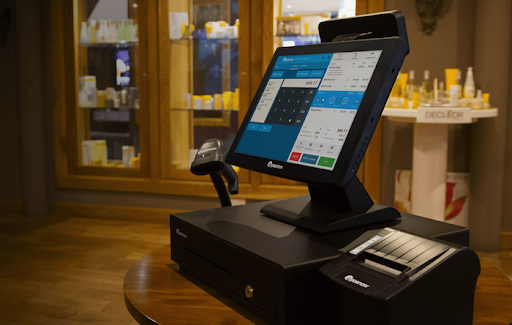Within today's rapid retail landscape, the difference among digital and offline transactions is growing hazy. An essential critical tool that enables businesses adapt to this change is the Point of Sale solution. These systems serve as the hub for transactions, client interaction, and stock control, allowing businesses to streamline operations while boosting the entire customer experience. As e-commerce continues to expand, the implementation of POS systems becomes essential for retailers aiming to create a uninterrupted shopping environment that links both their brick-and-mortar stores and digital platforms.
Grasping what a POS system is and how it works can empower businesses to make informed choices that meet their specific needs. From the evolution of traditional cash registers to up-to-date cloud-based solutions, the technology has come a long way and has the ability to transform operations across various industries. This piece will guide you through the essential features and functionalities of POS systems, their advantages for e-commerce, and how they can enhance efficiency, security, and customer interaction. Regardless of whether you're operating a small store or a busy restaurant, exploring the suitable POS system can put you on the path to achievement in today's challenging market.
Grasping POS Systems
A Point of Sale (POS) system is a mixture of physical components and software that companies use to handle sales transactions. At its heart, a POS system handles customer purchases, keeps an eye on inventory, and creates sales reports. Contemporary POS systems have changed significantly from classic cash registers, incorporating sophisticated technology to enhance operations and enhance the shopping experience, both at physical locations and over the internet.
The progress of POS systems has led to the development of cloud-based solutions, enabling businesses to control their sales data from any location with an online connection. These systems enable real-time updates and access to important business metrics, allowing owners to take informed decisions. Additionally, features such as customer relationship management integration and inventory management offer businesses the resources needed to enhance productivity and understand customer preferences.
Incorporating a POS system into your business can bring about better efficiency and a better customer experience. With the ability to process various payment methods, including contactless payments, and to support smartphone transactions, your business can meet the changing needs of customers. As technology develops, the prospects of POS systems looks bright, incorporating artificial intelligence and data analytics to provide greater insights into sales patterns and customer behavior.

Choosing the Best POS System
Selecting the appropriate POS solution is essential for enhancing operations in both e-commerce and traditional environments. Start by evaluating your business needs. Take into account elements such as the scale of your company, the quantity of transactions, and distinct industry needs. A system that is effective for a restaurant may not satisfy the needs of a shop, so it’s essential to evaluate capabilities that correspond with your business goals.
Afterward, explore the various types of POS systems available. Cloud-based options offer versatility and growth potential, that allow access from various devices and locations. On-premise solutions might be suitable for businesses that prefer to maintain their data in-house. Irrespective of your decision, ensure the system offers necessary functionalities like stock control, sales reporting, and customer relationship management integration. Learning yourself with both modern and traditional solutions will help you make an informed decision.
In conclusion, reflect on the future effects of your selection. Evaluate the costs involved, including installation costs, monthly fees, and additional expenses for capabilities like payment processing or assistance. Training and assistance are also essential aspects; a easy-to-use solution with solid customer assistance can greatly enhance employee productivity. Allocate Restaurant POS Systems to read reviews and perhaps perform a test to find the best fit for your distinct company context.
Improving Commercial Effectiveness with Point of Sale
A current point of sale platform is a cornerstone for enhancing commercial effectiveness across diverse industries. By merging various features such as sales analysis, inventory tracking, and client management into a unified platform, organizations can optimize their operations. This consolidation cuts down on the need for multiple individual systems, enabling for faster data retrieval and reporting. Consequently, employees can spend less time on clerical tasks and additional time prioritizing on client interaction and boosting support quality.
Furthermore, sophisticated POS systems deliver immediate data insights that enable organization owners to make intelligent decisions. By examining Point of Sales Systems for Restaurants , inventory quantities, and consumer behavior, organizations can refine their stock and boost their promotional strategies. Utilizing a POS system gives organizations the capabilities to predict customer needs and enhance their advertising efforts, resulting in enhanced personalized solutions that promote customer loyalty.
Finally, contemporary POS platforms enable flexibility, which is crucial in the current fast-paced retail and food service environments. Mobile POS systems allow team members to assist customers around the retail space or dining environment, reduce waiting times, and deliver a customized shopping experience. This versatility not just increase customer satisfaction but also enhances revenue potential, thereby boosting overall business effectiveness.
